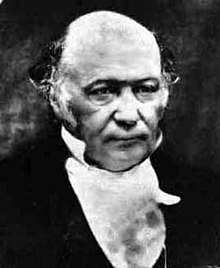
Back Hamiltoniese meganika Afrikaans ميكانيكا هاملتوني Arabic Гамільтанава механіка Byelorussian Хамилтонова механика Bulgarian Formulació hamiltoniana Catalan Hamiltonovská formulace mechaniky Czech Гамильтонла механика CV Hamiltonsche Mechanik German Hamiltona mekaniko Esperanto Mecánica hamiltoniana Spanish

| Part of a series on |
| Classical mechanics |
|---|
In physics, Hamiltonian mechanics is a reformulation of Lagrangian mechanics that emerged in 1833. Introduced by Sir William Rowan Hamilton,[1] Hamiltonian mechanics replaces (generalized) velocities used in Lagrangian mechanics with (generalized) momenta. Both theories provide interpretations of classical mechanics and describe the same physical phenomena.
Hamiltonian mechanics has a close relationship with geometry (notably, symplectic geometry and Poisson structures) and serves as a link between classical and quantum mechanics.

